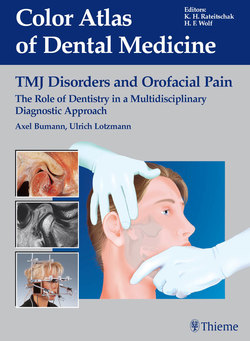Читать книгу TMJ Disorders and Orofacial Pain - Axel Bumann - Страница 8
На сайте Литреса книга снята с продажи.
ОглавлениеForeword
Craniomandibular disorders are a group of disorders that have their origin in the musculoskeletal structures of the masticatory system. They can present as complicated and challenging problems. Almost all dentists encounter them in their practices. In the early stages of the development of this field of study the dental profession felt that these disorders were primarily a dental problem and could most often be resolved by dental procedures. As the study of craniomandibular disorders evolved we began to appreciate the complexity and multifactorial nature that makes these disorders so difficult to manage. Some researchers even suggested that these conditions are not a dental problem at all. Many clinicians, however, recognize that there can be a dental component with some craniomandibular disorders and when this exists the dentists can offer a unique form of management that is not provided by any other health professional. Dentists therefore need to understand when dental therapy is useful for a craniomandibular disorder and when it is not. This understanding is basic to selecting proper treatment and ultimately achieving clinical success. This is the greatest challenge faced by all dentists who manage patients with craniomandibular disorders.
The purpose of this atlas is to bring together information that will help the practitioner better understand the patient’s problem thereby allowing the establishment of the proper diagnosis. A proper diagnosis can only be determined after the practitioner listens carefully to the patient’s description of the problem and past experiences (the History) followed by the collection of relative clinical data (the Examination). The interpretation of the history and examination findings by the astute practitioner is fundamental in establishing the proper diagnosis. Determining the proper diagnosis is the most critical factor in selecting treatment that will prove to be successful. In the complex field of craniomandibular disorders misdiagnosis is common and likely the foremost reason for treatment failure.
Dr. Alex Bumann and Dr. Ulrich Lotzmann have brought together a wealth of information that will help the practicing dentist interested in craniomandibular disorders. This atlas provides the reader with techniques that assist in the collection of data needed to establish the proper diagnosis. This atlas brings together both new and old concepts that should be considered when evaluating a patient for craniomandibular disorders. Some of the old techniques are well established and proven to be successful. Some of the newer techniques are insightful and intuitive, and will need to be further validated with scientific data.
In this atlas the authors introduce the term “manual functional analysis” as a useful method of gaining additional information regarding mandibular function. They have developed these techniques to more precisely evaluate the sources of pain and dysfunction in the craniomandibular structures. Each technique is well illustrated using clinical photographs, drawings and, in some instances, anatomical specimens. Elaborate, well thought out, algorithms also help the reader interpret the results of the mandibular function analysis techniques. Although these techniques are not fully documented, they are conservative, logical, and will likely contribute to establishing the proper diagnosis. The authors also provide a wide variety of methods, techniques and instrumentations for the reader to consider.
This atlas provides an excellent overview of the many aspects that must be considered when evaluating a patient with a craniomandibular disorder. Appreciating the wealth of information presented in this atlas will certainly assist the dentist in gaining a more complete understanding of craniomandibular disorders. It will also guide the practitioner to the proper diagnosis. I am sure that the efforts of Dr. Bumann and Dr. Lotzmann will not only improve the skills of the dentists, but also improve the care of patients suffering with craniomandibular disorders. My congratulations to these authors for this fine work.
Jeffrey P Okeson, DMD
Professor and Director
Orofacial Pain Center
University of Kentucky College of Dentistry
Lexington, Kentucky, USA 40536-0297
